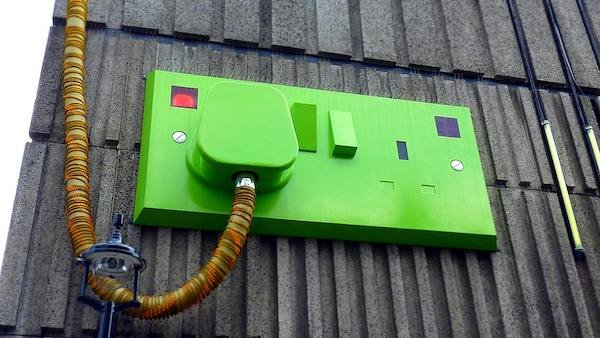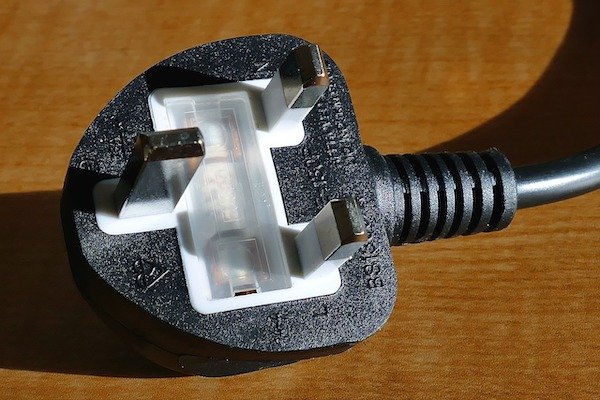
Electronics – UK Wall Outlet Style
Plug Type in the United Kingdom – Which Travel Adapter Do You Need in 2026
Planning a trip to the UK? One fact worth mentioning is that the United Kingdom has its own unique electrical plug type – the British power plug, also known as UK power plug or plug type G. When traveling abroad, it’s crucial to have a proper travel adapter that allows your electronic devices to function on the UK’s 230V, 50Hz power supply.
We’ve got you covered with all the pertinent information on the plug type in the United Kingdom and choosing the right adapter for your devices.

As a travel enthusiast and photographer from the UK. I have a passion for nature and wildlife, I tend to focus on eco-tourism and sustainable travel but like to cover a wide range of articles. My favourite destination has got to be Malta, I love the food there and the relaxing nightlife of Silema is my happy place!
Affiliate Disclosure: Some of the links on our site are affiliate links, meaning, at no additional cost to you, we may earn a commission if you click through and make a purchase. This helps us to continue providing valuable content and supports our efforts in bringing the travel community together. We only recommend products and services we believe in and think you’ll find useful. Complete details are included in our affiliate disclaimer. Thank you for your support!
Key Takeaways
- The United Kingdom uses plug type G, featuring three rectangular pins in a triangular pattern.
- Standard supply voltage in the UK is 230V with a frequency of 50Hz.
- Travel adapters do not convert voltage or frequency – they simply enable you to plug your device into the UK socket.
- Ensure your devices’ voltage and frequency compatibility before traveling to the UK.
- If necessary, bring both a type G travel adapter and a voltage converter or transformer with you.
- Consider investing in a universal travel power adapter for future trips.
Understanding UK’s Electrical System: Plug Type G
When traveling to the United Kingdom, it’s essential to become familiar with its electrical system. This includes the plugs necessary for your devices, such as smartphones, laptops, and hair dryers. The UK operates on an entirely different electrical system compared to the United States. The UK uses the unique plug type G instead of the standard U.S. plug types A and B.
Let’s explore more about the British plug type G and why it is crucial to understand the UK’s electrical system before embarking on your journey.
Know your UK power plugs and electrical system: Be prepared and avoid any nasty surprises when using your electrical devices in the United Kingdom.
Plug type G is exclusively used in the UK and does not have alternative plug types. This distinct plug design features three rectangular blades in a triangular formation. It is designed for a safer, more secure connection. It is crucial to know that U.S. plugs (types A and B) are not compatible with UK type G outlets, requiring a plug adapter for your devices to work.
Keep in mind that voltage conversion may also be necessary along with the difference in plug shapes. The UK uses a standard supply voltage of 230V. This has a frequency of 50Hz. The U.S. in contrast operates on a standard supply voltage of 120V and a frequency of 60Hz. The voltage difference can potentially damage your electronic devices without proper voltage conversion.
UK Plug Types
- Plug type G: Unique to the UK, with three rectangular blades in a triangular formation
- Plug type UK: The standard for power outlets in the United Kingdom
For a quick overview of the plug types, take a look at the following table:
| Plug Type | Description | Compatibility |
|---|---|---|
| Type A | Two flat parallel prongs | ❌ Not compatible with UK outlets |
| Type B | Two flat parallel prongs and a rounded grounding pin | ❌ Not compatible with UK outlets |
| Type G | Three rectangular prongs in a triangular formation | ✅ Standard plug type for the United Kingdom |
Understanding the UK’s electrical system and plug type G is essential for ensuring smooth device usage while in the United Kingdom. Make sure to invest in an appropriate plug adapter and voltage converter, if necessary, to keep your favorite devices safe and operational during your journey.
Adapting to UK Power: Do You Need a Voltage Converter or Transformer?
Here we will guide you through identifying dual voltage and single voltage appliances, explain the differences between converters and transformers, and emphasize the importance of checking appliance ratings before travel.
Identifying Dual Voltage and Single Voltage Appliances
Before you pack your electrical appliances for your trip to the United Kingdom, it’s imperative to check their voltage compatibility. Appliances can be either dual voltage or single voltage. A dual voltage appliance displays ‘INPUT: 110-240V’ on its rating plate. This indicates it can operate within the UK standard voltage of 230V without any conversion. On the other hand, a single voltage device requires a consistent voltage supply (230V) and may necessitate a voltage transformer or converter for safe operation.
How Converters and Transformers Differ
Voltage converters and voltage transformers serve different purposes, depending on your appliance requirements. A voltage converter is suitable for devices with short-term use (up to 2 hours), like hairdryers or irons. Conversely, a voltage transformer is designed for devices that demand continuous power, such as laptops or gaming consoles.
It is essential to note that each converter or transformer comes with a maximum power rating in AMPs or WATTS. Ensure that the appliance you plan to use during your trip does not exceed this power rating. It could lead to overheating and damage. For a comparison, check out what adaptors are needed for Spain.
The Importance of Checking Appliance Ratings Before Travel
Electrical appliance safety is a top concern when traveling abroad. Incompatible voltage with UK power supply can cause damage to your devices or even result in hazardous situations like electrical fires. Consequently, always check the rating plates on your appliances, ensuring they align with the United Kingdom’s standard supply of 230V and 50Hz.
Remember that UK travel adapters do not convert voltage or frequency. They merely enable your device to connect with the British electrical plug type. Ensure you choose an appropriate adapter for your appliances, and avoid using adapters that lack earth connections with non-double-insulated appliances.
In summary, identifying the voltage requirements of your appliances is essential when traveling to the United Kingdom. Understanding the difference between voltage converters and transformers can help ensure electrical appliance safety during your trip.


Choosing the Right Adapter: Tips for US Travelers
Planning a trip to the UK can be exciting, but it’s crucial to ensure that all your electronics are compatible with the electrical system there. US travelers require specific guidance and equipment to navigate the UK’s plug type G outlets successfully. These tips will help you prepare your devices effectively to avoid any issues while abroad.
- Bring a Type G Plug Adapter: To use your electronic devices in the UK, you’ll need a travel adapter for the UK. The UK outlet adapter is essential since US plugs are not compatible with the UK’s plug type G outlets. Before your departure, invest in a high-quality type G plug adapter set.
- Check Your Devices for Dual Voltage: If your electronic device is not dual voltage, a step-down voltage converter is required. This converter will prevent your device from overheating and sustaining damage due to the voltage difference. Make sure to purchase a voltage converter designed for your appliance’s specific needs, as using an inappropriate converter can cause issues.
- Avoid Using European Adapters: Notably, European adapters are not compatible with UK outlets. These adapters are designed for plug types C, E, and F, which are different from the UK’s type G plug. Therefore, ensure that you have a specific UK outlet adapter in your travel kit.
- Consider a Travel Power Strip: Bringing a travel power strip with multiple sockets can be a smart move. This is especially helpful if you need to charge multiple devices simultaneously, as some accommodations in the UK may have limited outlet availability.
- Invest in a Travel USB Charger: A travel USB charger is a great accessory to have on hand while traveling. This device will allow you to charge your smartphones, tablets, and other USB-enabled devices more efficiently, ensuring they are always powered up and ready for use.
Remember, it’s essential to confirm the voltage, frequency, and plug type compatibility of your devices before travelling to the UK. A type G plug adapter set, along with a travel USB charger, will help you stay connected and fully charged during your adventure abroad. Make sure that wherever you travel that you have the correct adapter, each ccountry differs, like France and the UK differ.
Conclusion
As you prepare for your trip to the United Kingdom, it is crucial to select the right power adapter and ensure all your electronic devices are compatible with the UK electrical system. Before you set off on your journey, make sure you have the proper type G travel adapter and, if needed, a voltage converter to accommodate the UK’s 230V, 50Hz power supply.
Take the time to examine the voltage and frequency requirements of your devices in advance. This will help safeguard against potential hazards and protect your electronics from damage. For those who frequently travel, a universal travel power adapter could be a smart investment, especially if it includes USB ports for charging multiple devices at once.
Plug Types of The UK FAQ
he United Kingdom uses plug type G, characterized by three rectangular pins in a triangular pattern. This plug type is not compatible with US plugs (types A and B), so travelers need a plug adapter to use their devices in the UK.
The standard supply voltage in the UK is 230V, and the frequency is 50Hz. Keep this in mind when checking your appliance’s compatibility to ensure it can safely operate within the UK’s electrical system.
That depends on whether the devices you are bringing are dual voltage or single voltage. Dual voltage appliances are rated for ‘INPUT: 110-240V’ and can operate within the UK’s voltage without a converter. Single voltage devices require a constant voltage (230V), and you may need a voltage transformer or converter for safe operation.
Converters are suitable for devices with short-term use (up to 2 hours), such as hairdryers or irons. Transformers are designed for devices that need continuous power, like laptops. Each converter or transformer has a maximum power rating in AMPs or WATTS that should not be exceeded by the appliance you intend to use.









